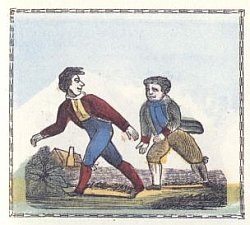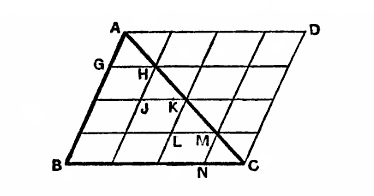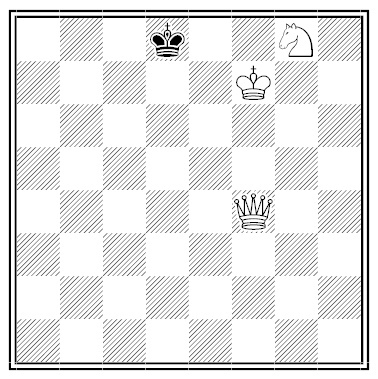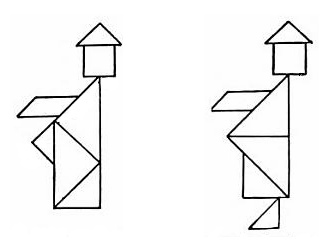
You have 100 pounds of Martian potatoes, which are 99 percent water by weight. You let them dehydrate until they’re 98 percent water. How much do they weigh now?

You have 100 pounds of Martian potatoes, which are 99 percent water by weight. You let them dehydrate until they’re 98 percent water. How much do they weigh now?

Zachary challenges his brother Alexander to a 100-meter race. Alexander crosses the finish line when Zachary has covered only 97 meters.
The two agree to a second race, and this time Alexander starts 3 meters behind the starting line.
If both brothers run at the same speed as in the first race, who will win?

A depressing alphametic by Joseph Madachy. Each letter stands for a digit. What are the digits?
We learned in this problem that (spoiler!) if two squares of the same color are cut out of a chessboard, the remaining 62 squares cannot be tiled by 31 dominoes.
What if the squares removed are of different colors? Is the task possible then?

An anonymous puzzle from the British Chess Magazine, 1993. White to mate in half a move.

The above line of figures does not appear very interesting at first sight, but if one asks some charming member of the fair sex to turn it upside down and hold it to a mirror to read it, a hidden meaning becomes apparent.
— Strand, December 1908

Here’s proof that one leg of a triangle always equals the sum of the other two.
ABC is our triangle. Extend it make a parallelogram, as shown, and divide the parallelogram into a grid. Obviously,
AB + BC = (AG + HJ + KL + MN) + (GH + JK + LM + NC).
Now let the grid grow increasingly fine: Instead of dividing the parallelogram into a 4×4 grid, make it 5×5, then 6×6, and so on. With each iteration, the stairstep figure described above will approximate AC more closely, and yet its total length will always equal AB + BC. Thus, at the limit, AB + BC = AC. Where is the error?
(From Henry Dudeney’s Canterbury Puzzles, via W.W. Rouse Ball’s Mathematical Recreations and Essays, 1892.)

By Eric Angelini, Europe Echecs, 1990.
White adds one square at the edge of the board and then mates in two.

A tangram paradox by Sam Loyd. Each of these gentlemen is assembled from the same seven pieces. Yet one has a foot and the other doesn’t. How is this possible?